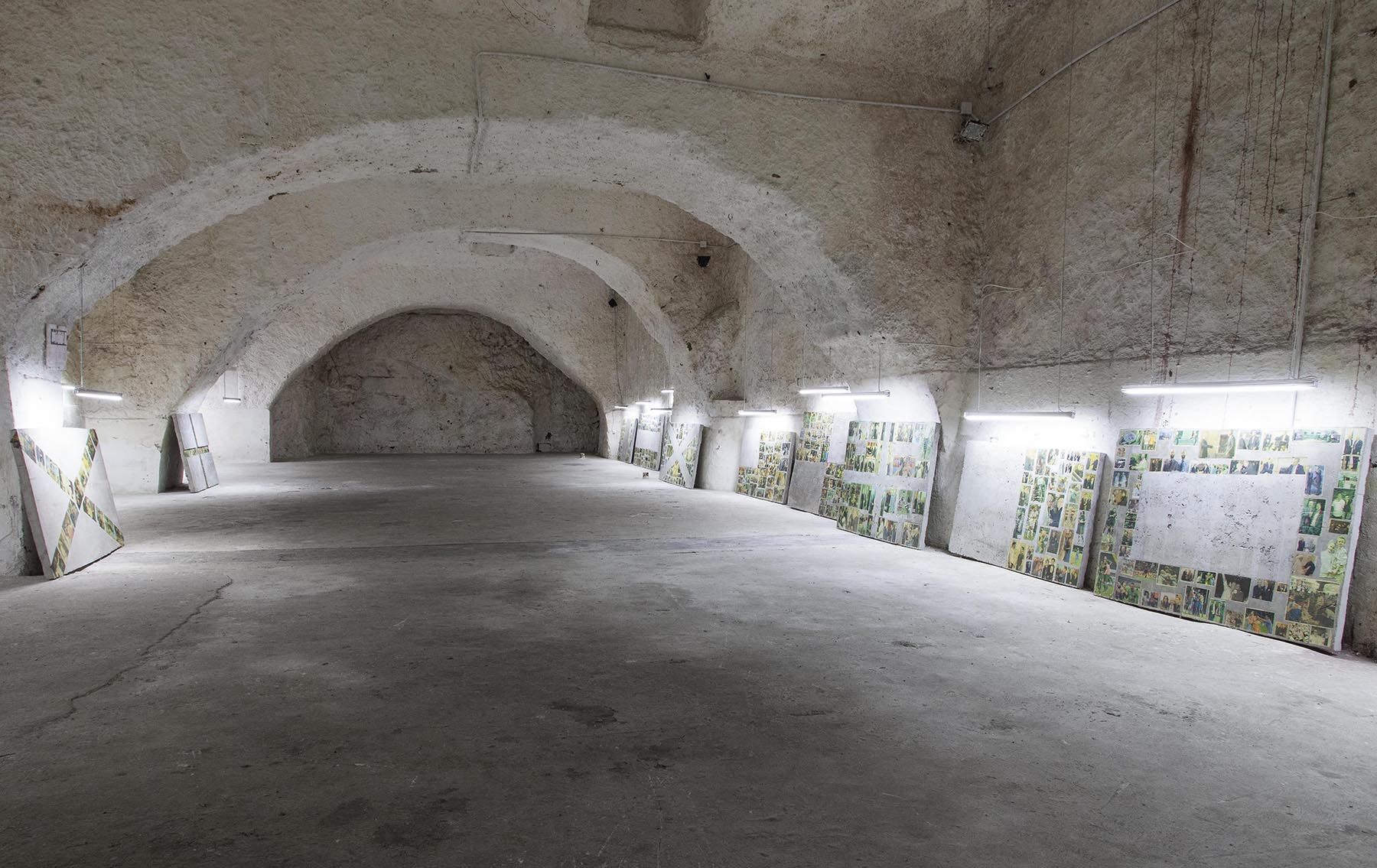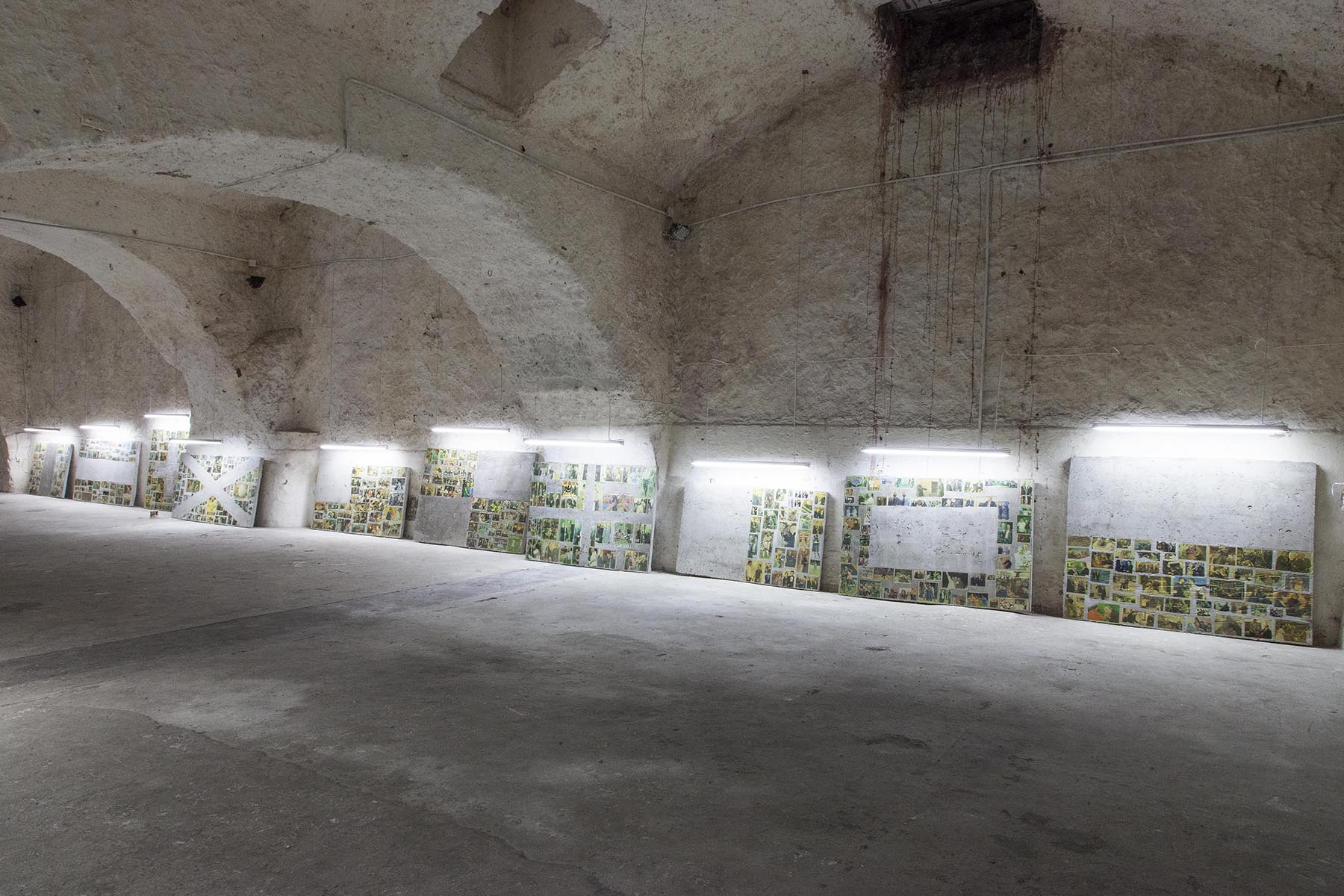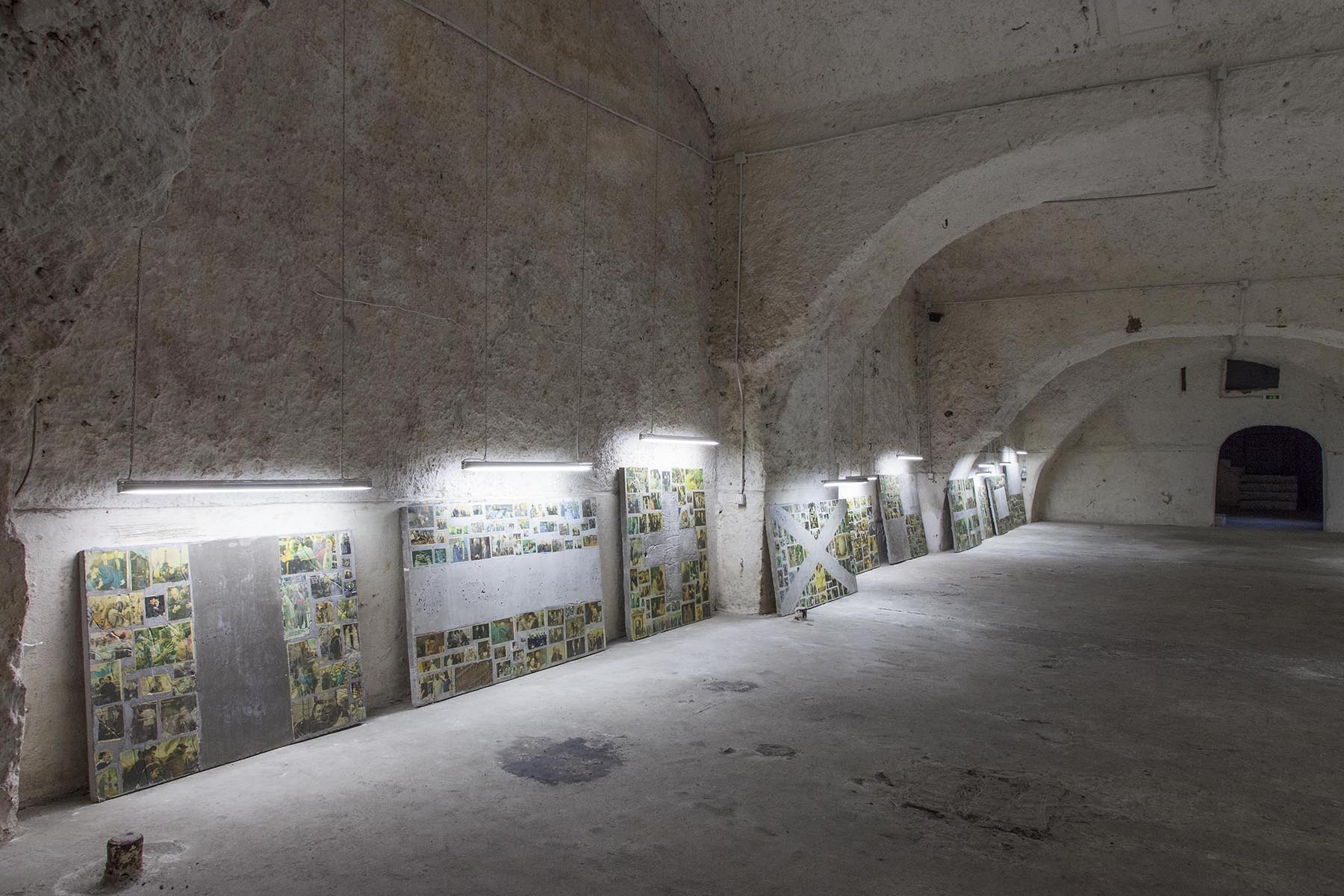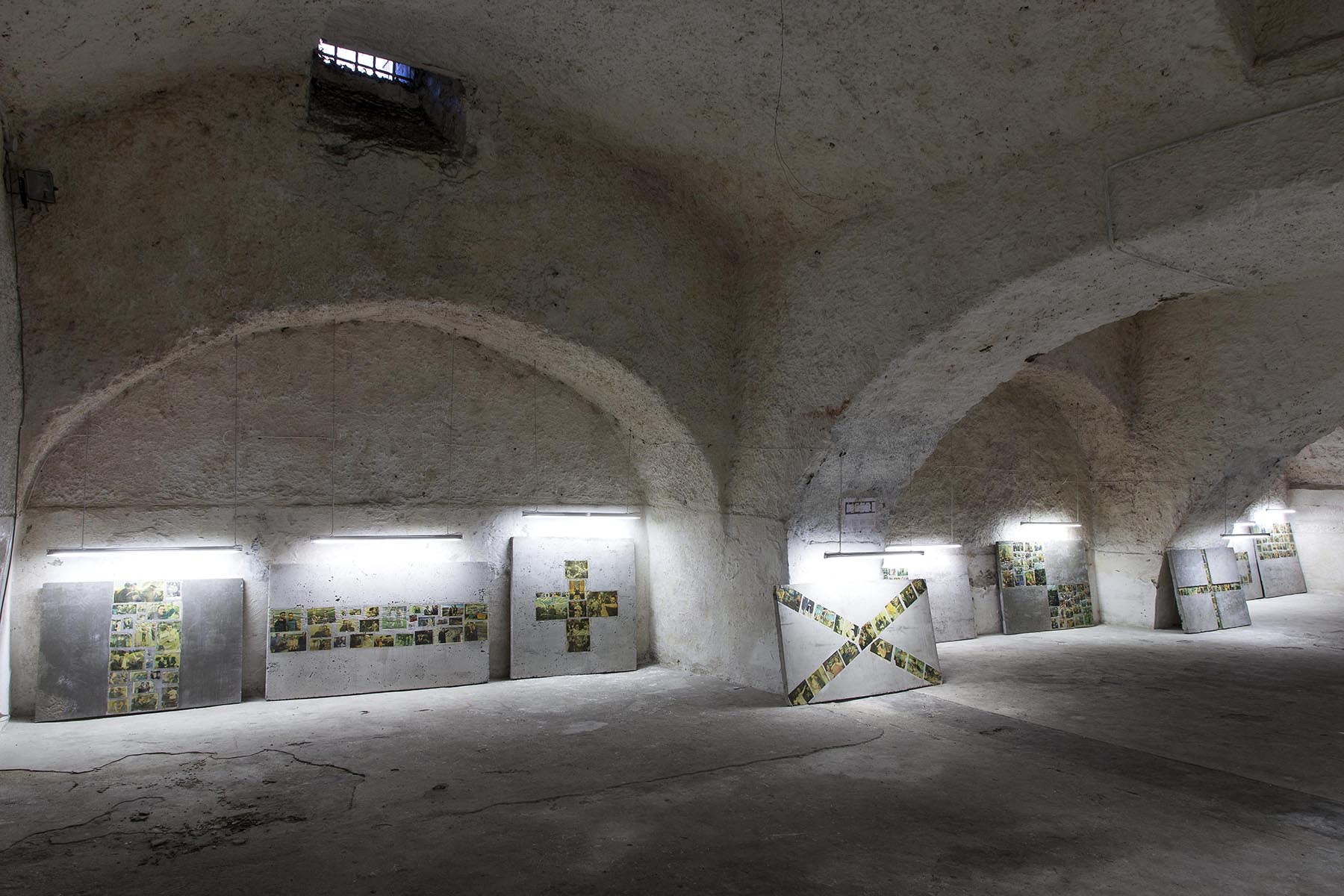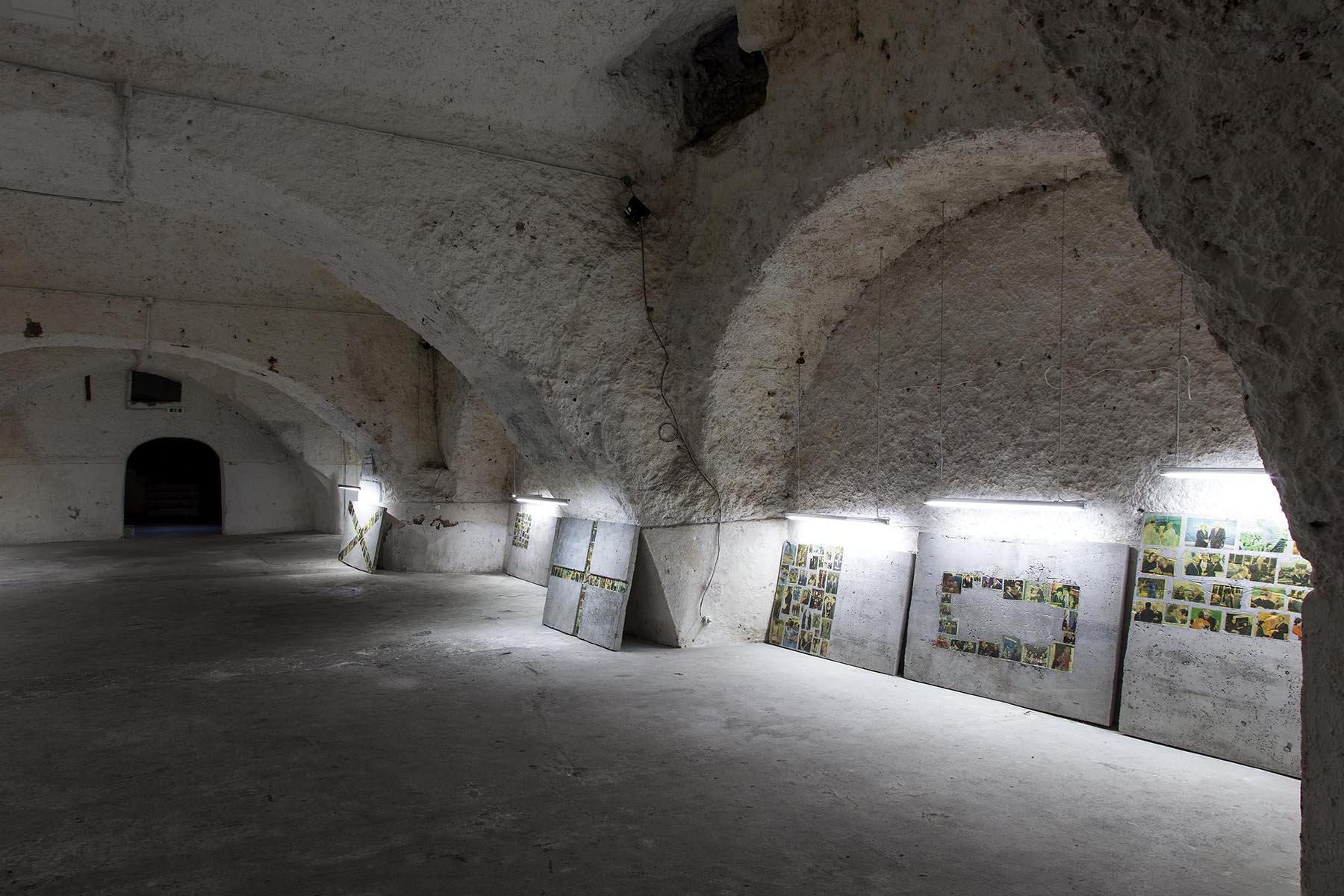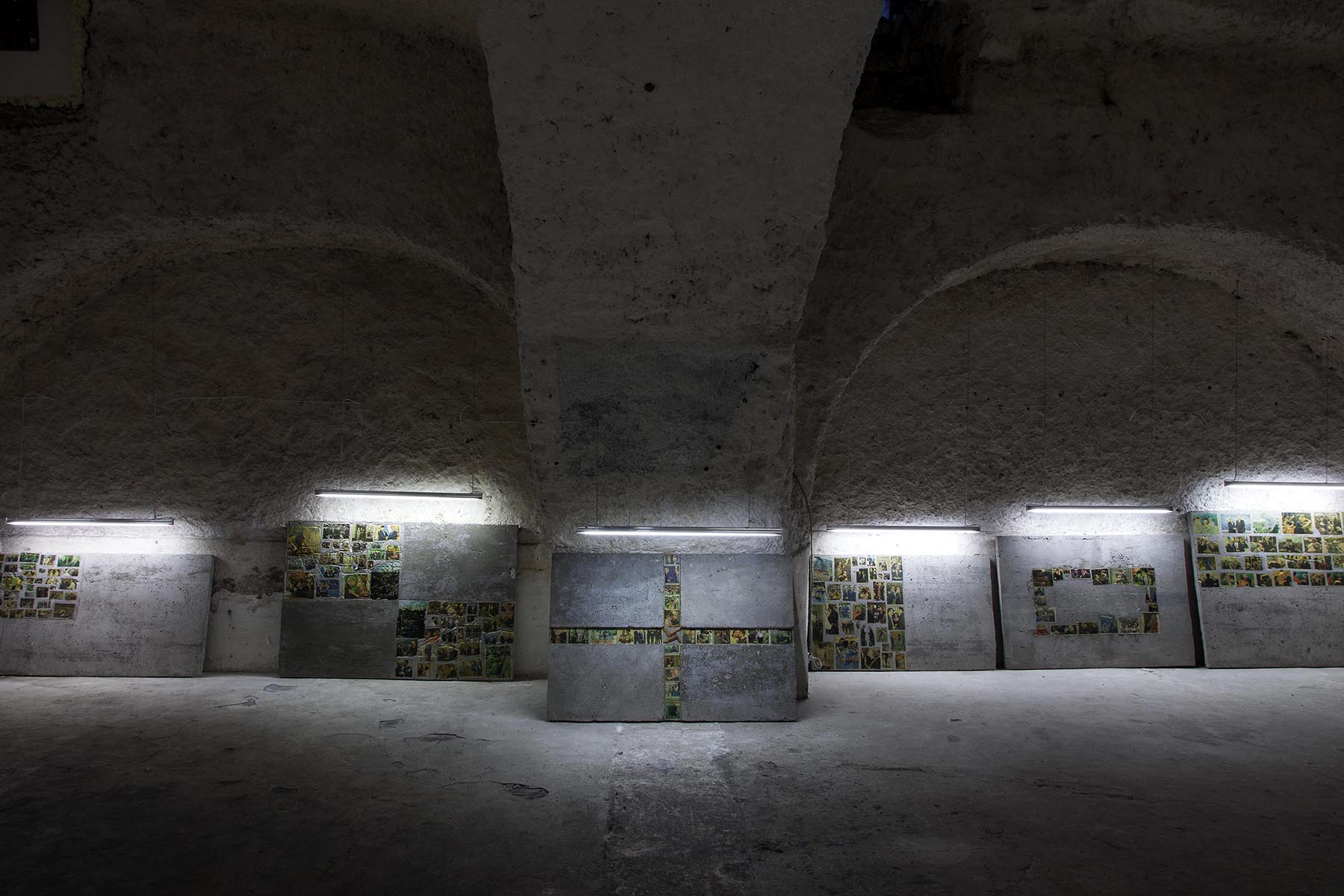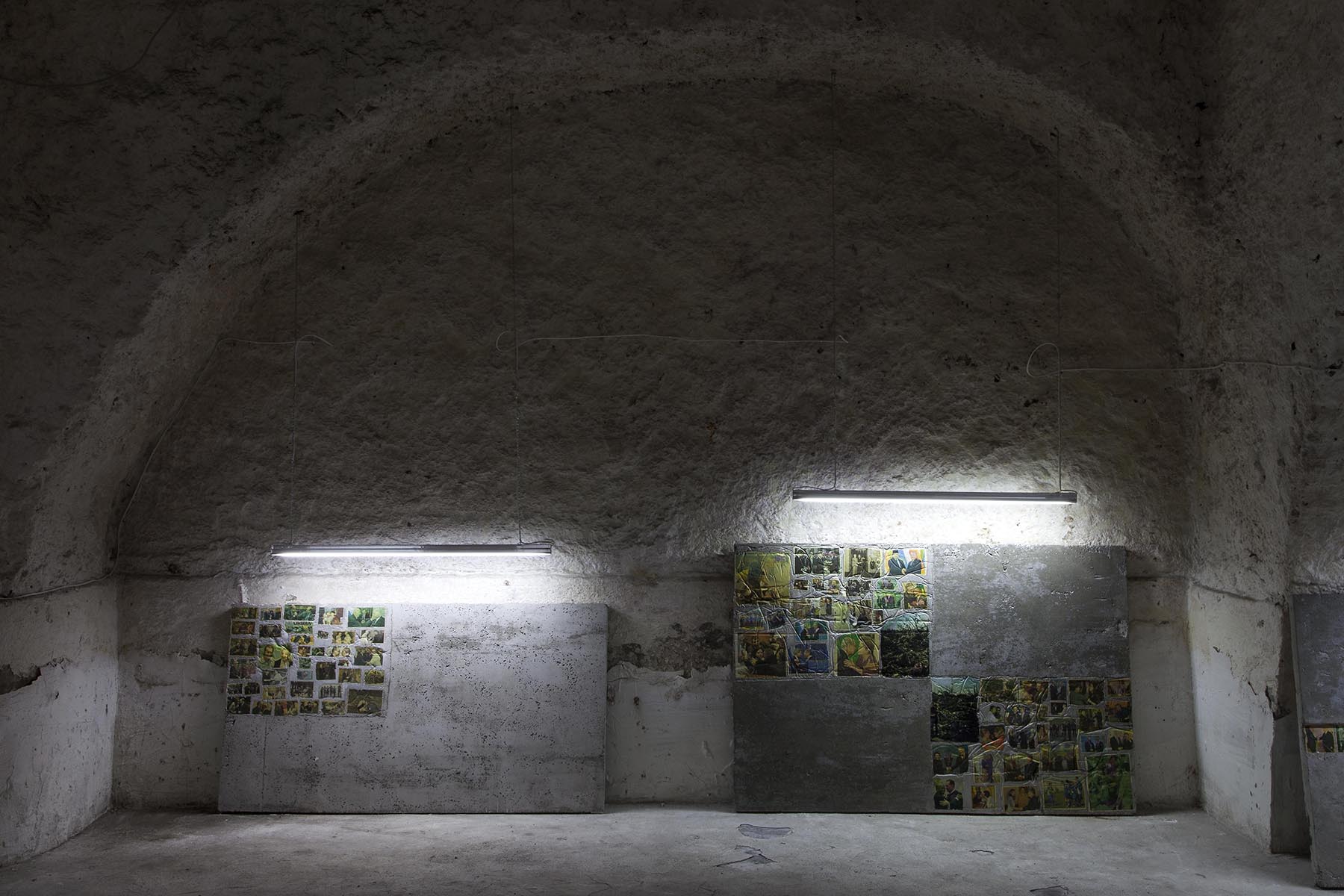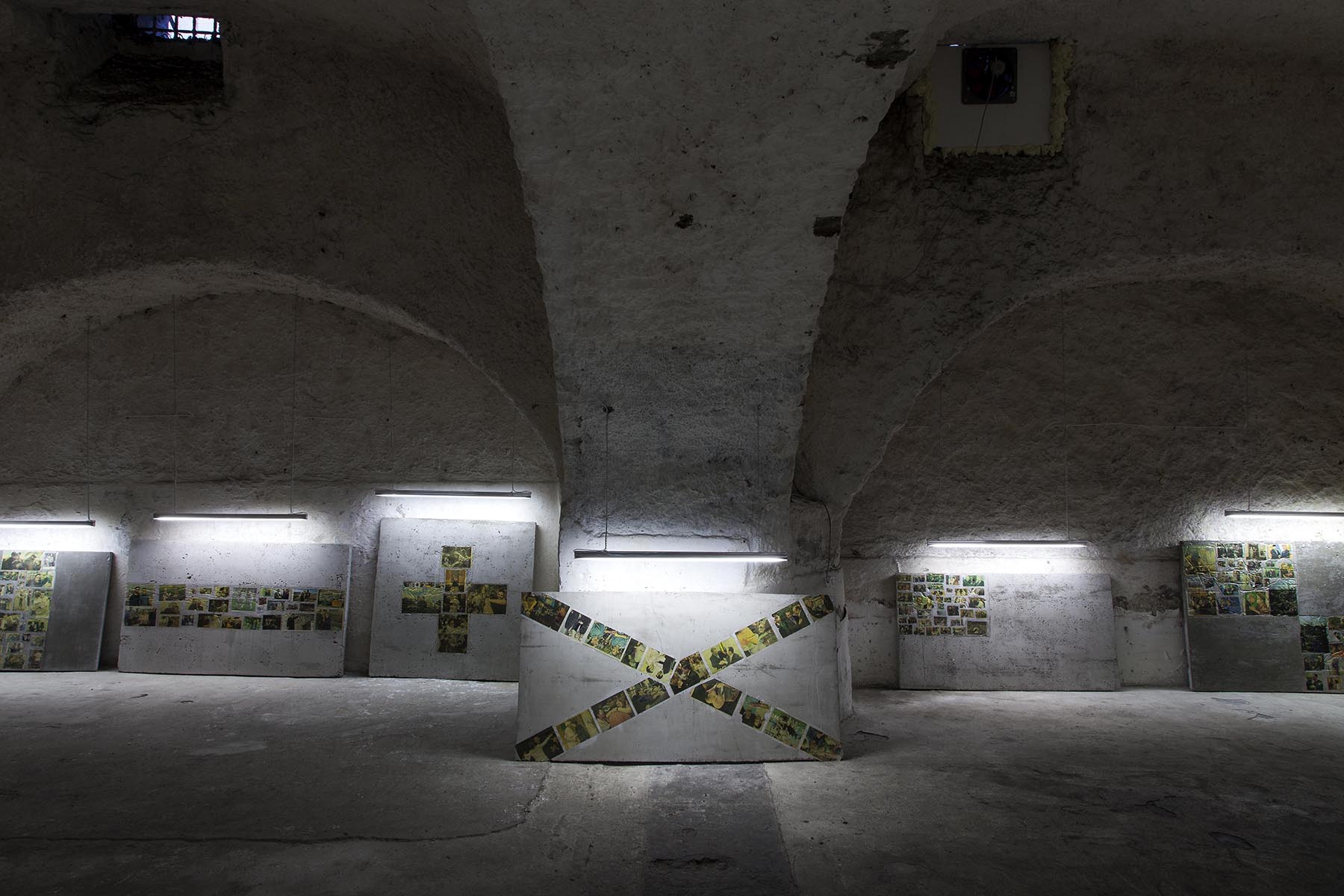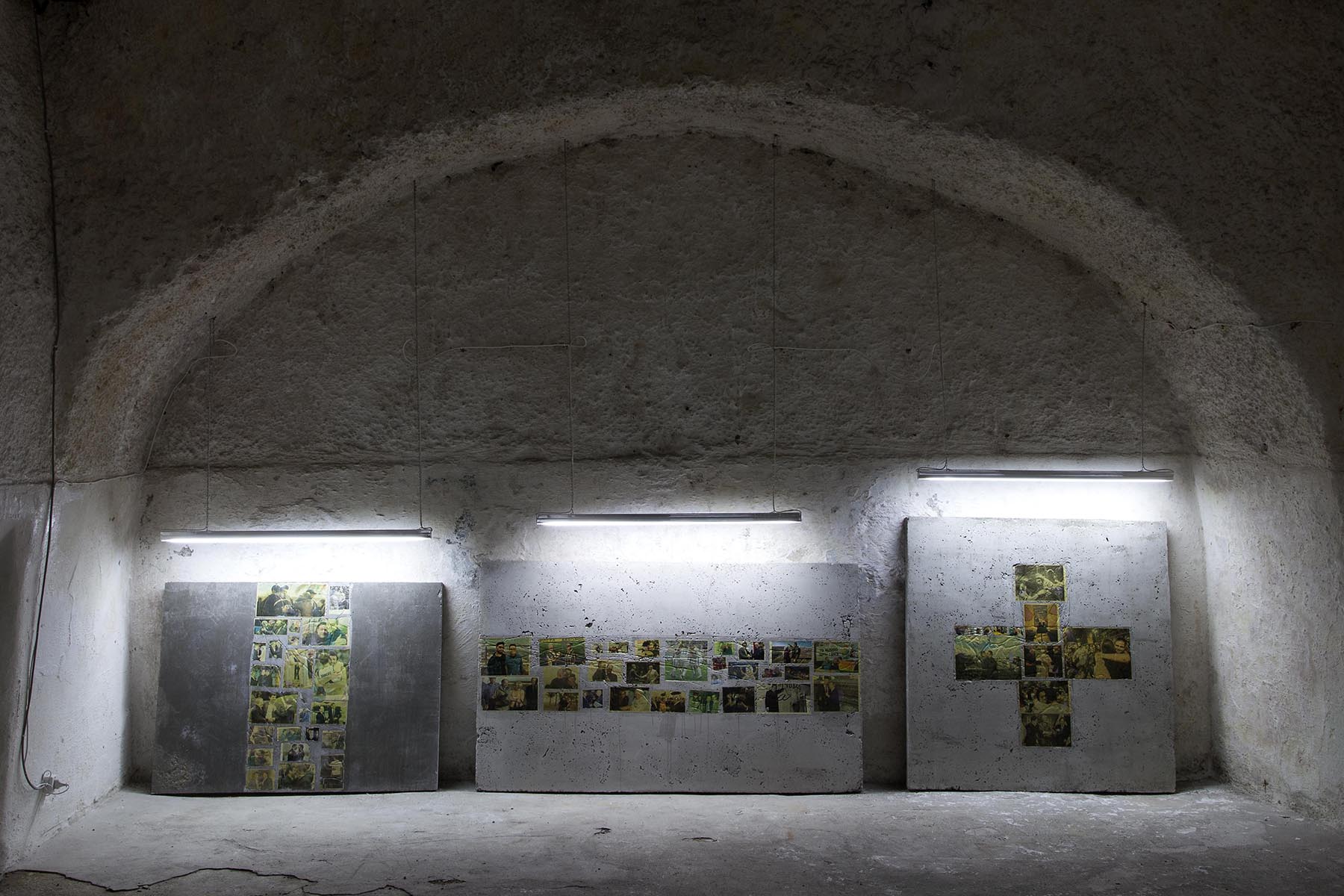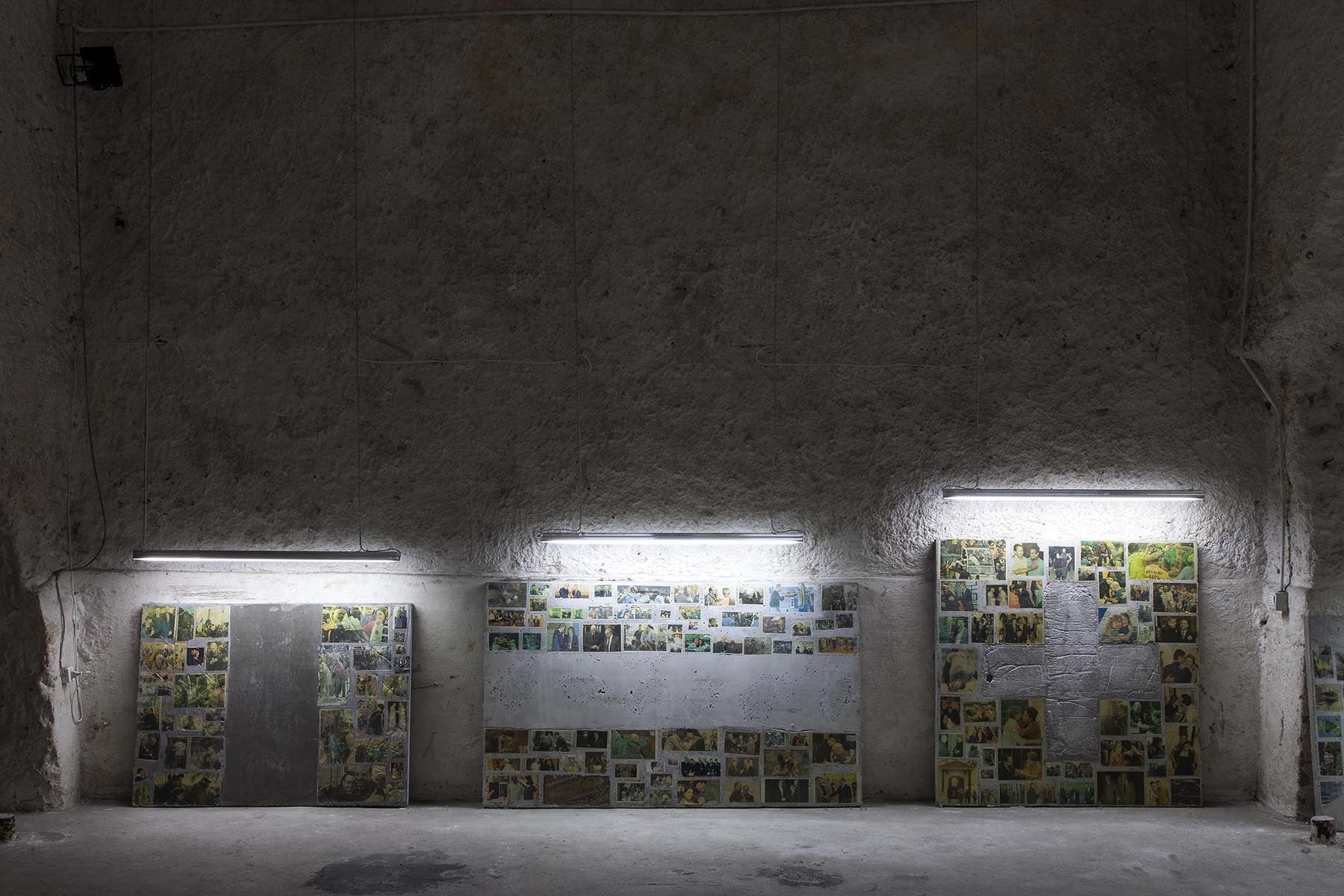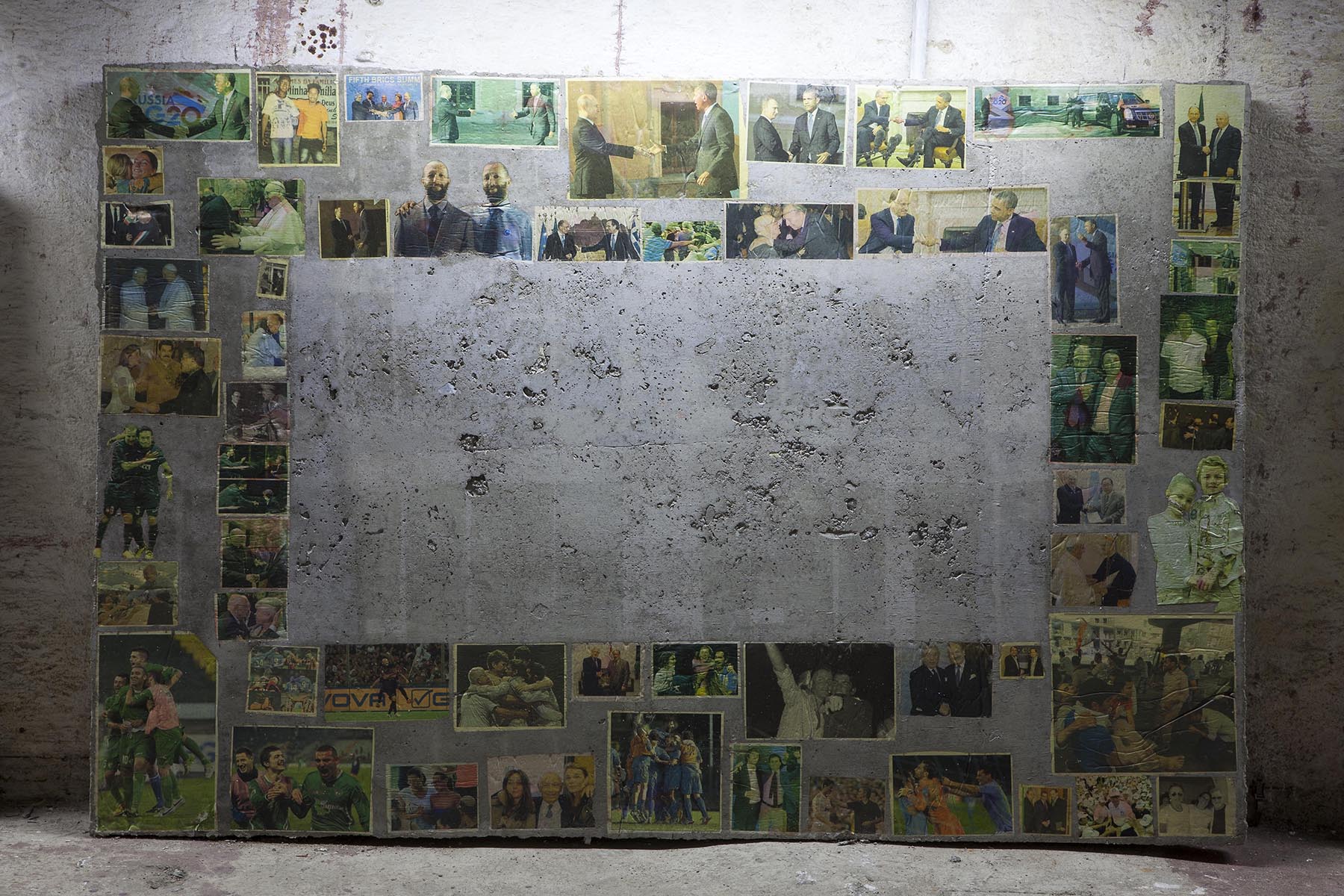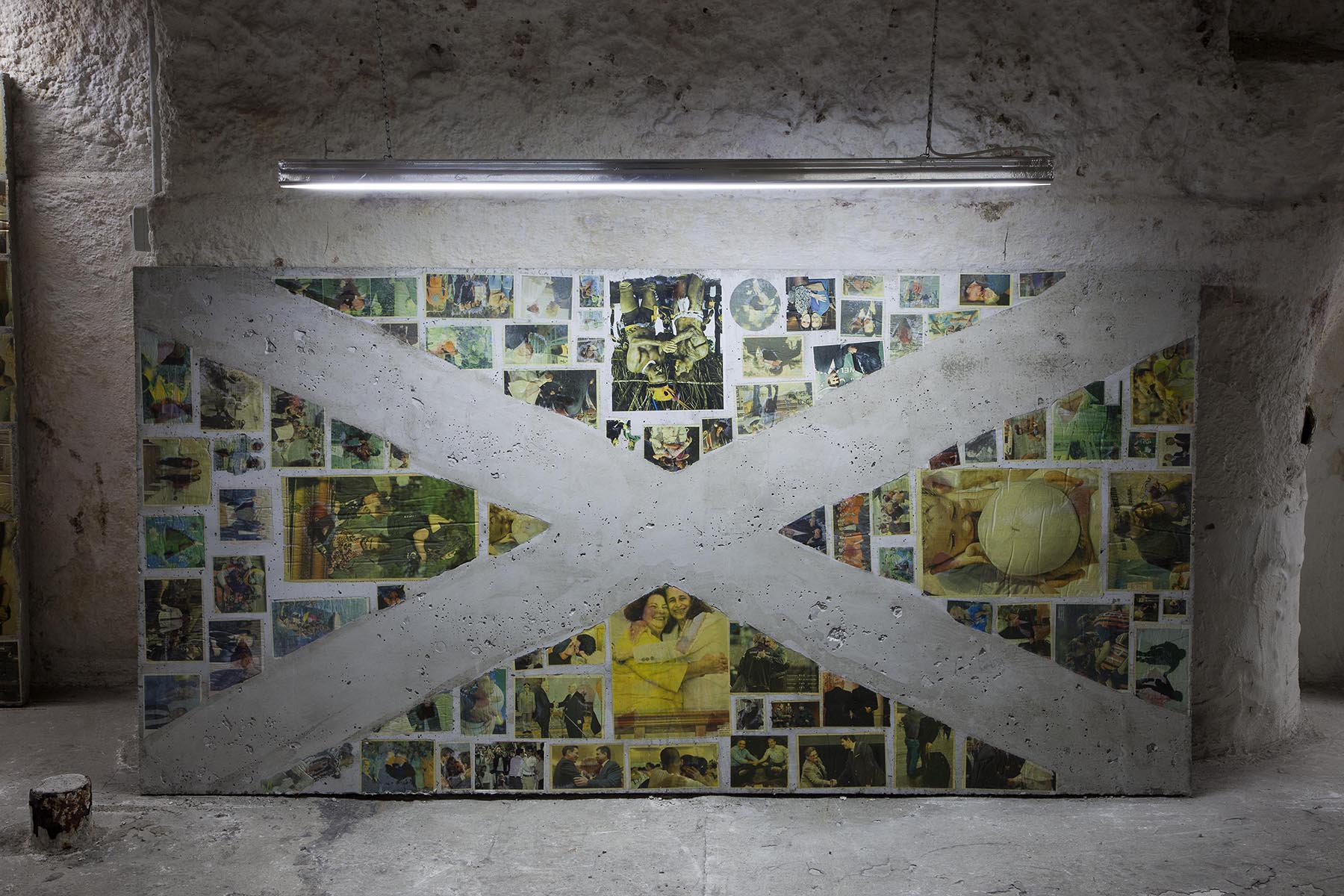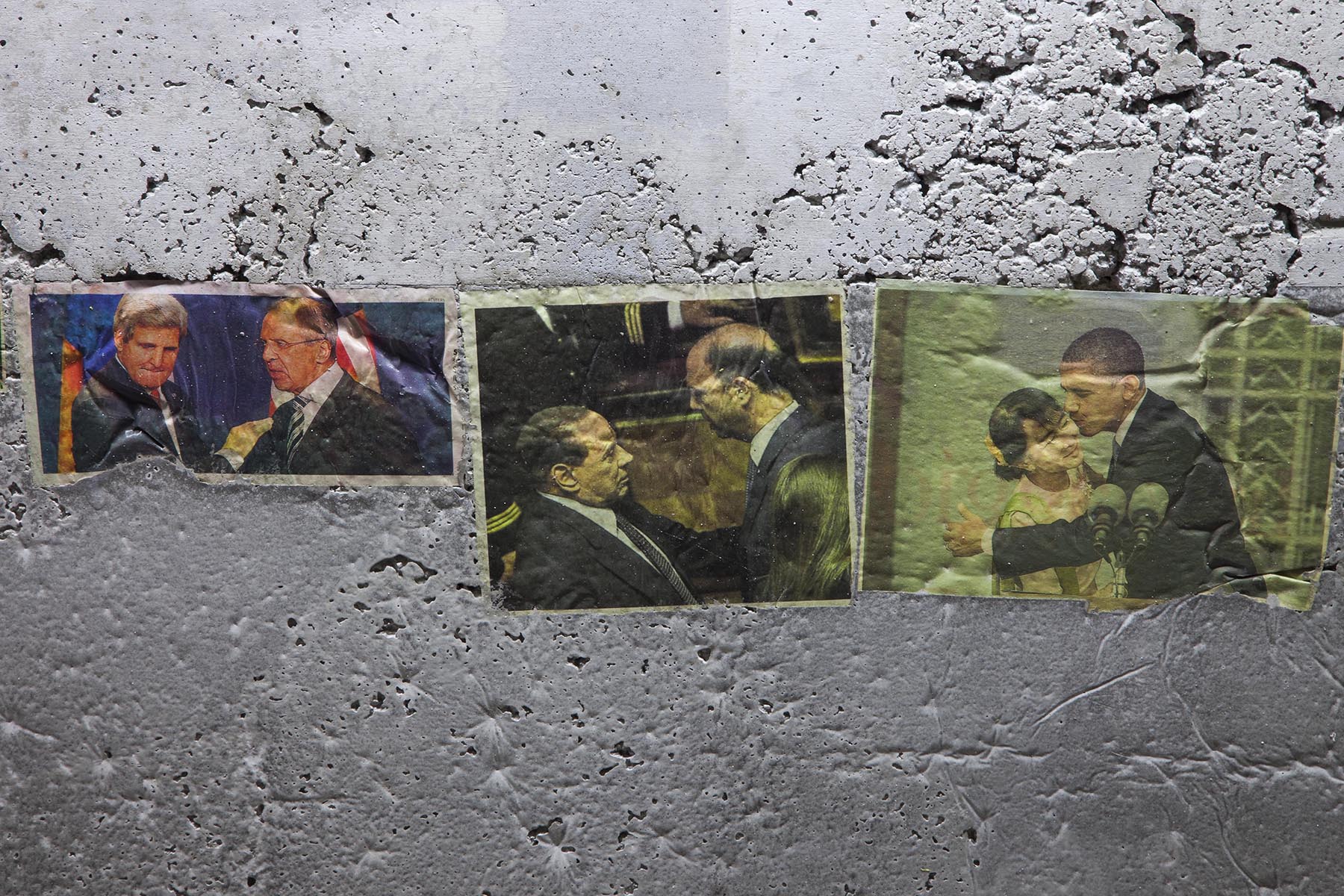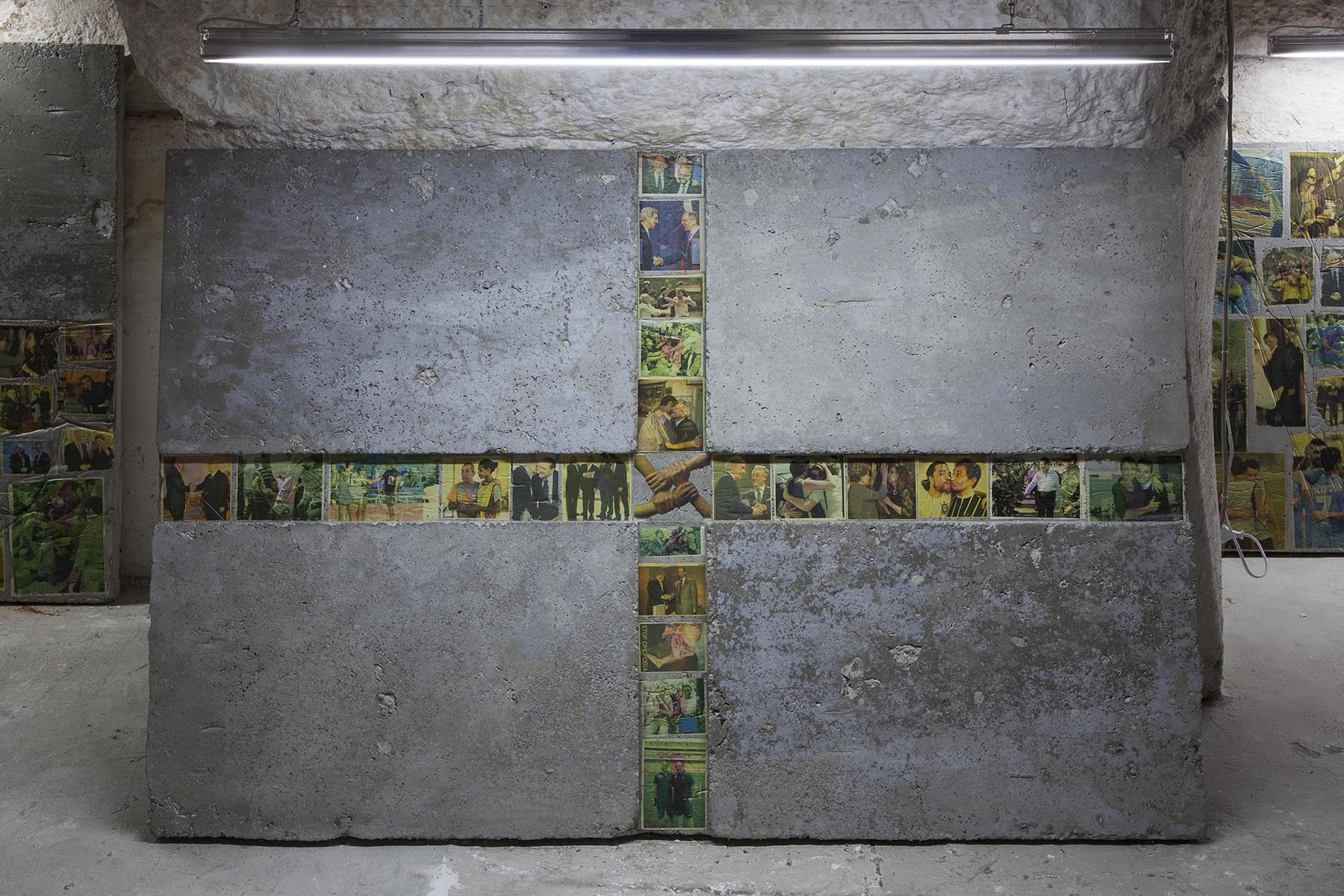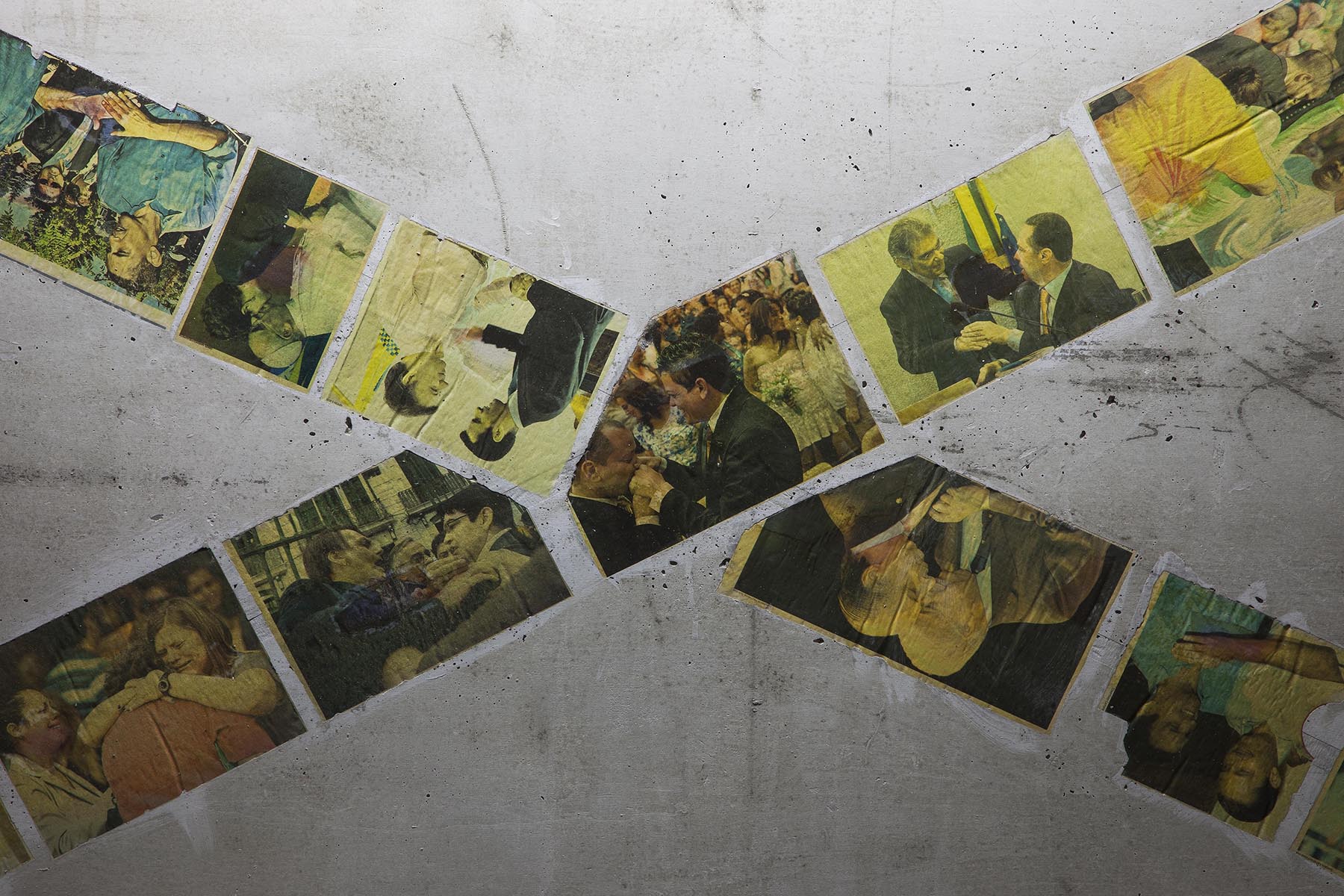26.10.2013 \\ 02.12.2013
THE AGREEMENT
Featuring new solo projects by Matheus Rocha Pitta (Rio de Janeiro) and Klaus Weber (Berlin), Fondazione Morra Greco is proud to present the third installment of a series of exhibitions entitled Hybrid Naples: L’ordine delle idee deve procedere secondo l’ordine delle cose.
Weber will install an homage to the people of Naples: cast from numerous live and still-life models – from girls on a Burberry blanket to a garage door to a cat – the negatives of plaster molds will populate the first floor of the Foundation, as if envisioned in dreams by the central character of a dreamer taking a nap on a bench. In the basement, Matheus Rocha Pitta, inspired by ancient Greek funerary steles depicting a dead person shaking hands with a divinity, will show a series of concrete slabs reminiscent of tombstones, but encrusted with current clips from international newspapers featuring – often powerful – people in gestures of agreement: shaking hands, embracing, sometimes kissing.
The main title of the series reflects on the city of Naples as a continuously rebuilt monument to hybridity. “The open city feels like Naples, the closed city feels like Frankfurt”, wrote Richard Sennett in 2006. Naples here is understood as a city remaining adaptable by improvisation, accommodating diversity and dissonance (for better or worse) rather than over-determined homogenization. But rather than just a current state of things, the idea of an ‘open’, hybrid Naples also implies three millennia of history: of a place where Greek, Etruscan, Roman, Spanish, German, Dutch, and many other presences have left their mark.
As a cultural reality and technique, hybridity – the crossing and intermingling of different cultural influences and elements – has become a factor dramatically accelerated by contemporary technological environments, from the importance of social media to artists using affordable digital technology. It directly affects what today we understand as being contemporary art: potentially, anything. However, this broadness of possible methods and motifs for current artists should not be understood as randomness. This is what the subtitle of the show is meant to remind of: “the order of ideas must follow the order of things”. It is a quote by the great Neapolitan philosopher Giambattista Vico (1668–1744). It stems from his famous main work Scienza nuova (New Science, 1725), in which he argues that civilization develops in recurring cycles. This axiom “the order of ideas must follow the order of things” asks us to consider that the shared experience of the conditions under which we live gives rise to shared ideas – rather than the other way round (an anticipation of Karl Marx’ famous “being determines consciousness”).
Taking this thought as a cue for the exhibition, it means that the artist’s experience and its reflection in their internal thought processes will give rise to the ideas expressed in their respective projects – rather then these ideas being randomly preconceived products ‘parachuted in’, or merely being the outcome of prescriptive instructions by a curator demanding illustrations of hybridity or any such thing.
The first installments with Max Frisinger’s deadpan sculptural interventions and Shana Moulton’s funnily surreal videos were cases in point. So were Christian Waldvogel’s homage to Giordano Bruno, a candle machine producing extra-solar planets, as well as Eric Wesley’s contemporary version of a knight’s suit of armor presented in a dramatic showbiz staging. Now it‟s Matheus Rocha Pitta’s and Klaus Weber’s turn.
In his work, Matheus Rocha Pitta keeps returning to a connection between gravel or dirt and the circulation of images and objects. In a major show at Rio de Janeiro’s Paço Imperial in 2012, he piled plastic-wrapped gravel from a demolished modernist building behind fake walls, with narrow doors left ajar. One couldn’t help but think of smuggled goods – in the vein of earlier works such as Drive Thru #1 (2007), for which the artist – during a residency in Austin, Texas – ‘confiscated’ land and packaged ordinary dirt in plastic foil like drugs, photographing it in car headlights in front of a fence, just like the trophy photos meant to prove successes in the fight against drug trafficking.
For his Naples project The Agreement (L’Accordo), Rocha Pitta works with a curious technique of pouring concrete onto findings, a hybrid of cast and collage. It is based on a common, cheap way to cover graves: if you can’t afford marble or travertine, you use a concrete slab instead. In order to prevent the poured concrete from sticking to the wooden casting mold, the latter is laid out with newspaper, which thus inevitably becomes part of the underside of the slab as the paper is fixed in place by the hardening concrete. The dark joke is, of course, that the dead will have something to read. Correspondingly, even in the ‘dead’ art object, crucial insights might still be encapsulated, and wait to be unearthed. Incidentally, it was in the Naples region that Pozzolana concrete was already used first by the Greeks and then the Romans; also, Rocha Pitta came across ancient Greek funerary steles depicting the dead person shaking hands with a divinity – as if as a gesture of assurance that the dead will continue to be under the protection of that divinity. Rocha Pitta had to think of contemporary media images of any kind of people shaking hands, embracing, or sometimes kissing – all signaling – performing – some form of agreement. Using these images on the concrete slabs – divided up in a series of diptychs – they will be presented in the basement of the Foundation: as a kind of crypt for the paradoxical nature of the agreement as an affirmation of change.
All images Courtesy Fondazione Morra Greco, Napoli
© Amedeo Benestante

